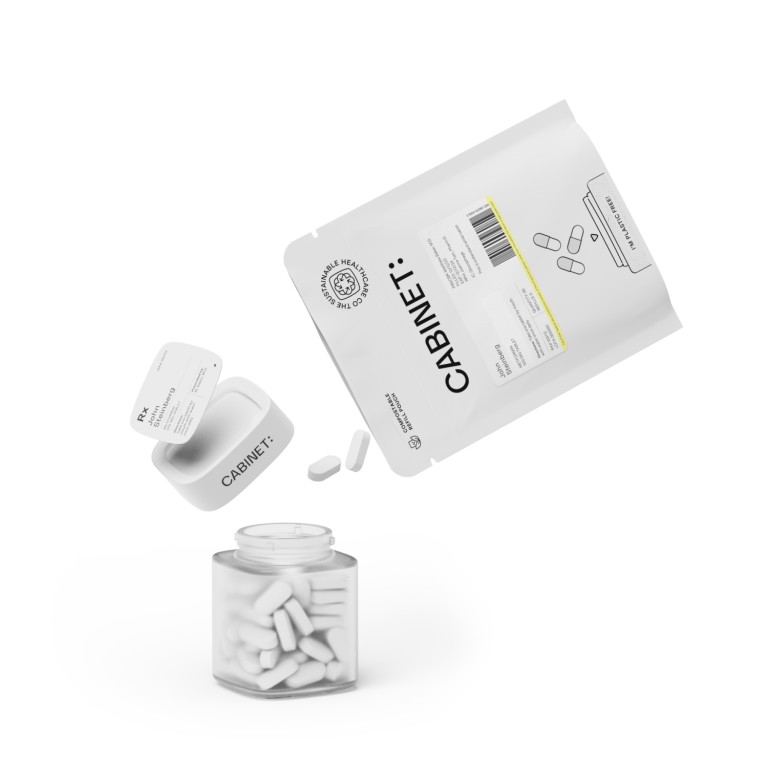Warfarin, a commonly prescribed anticoagulant, is known for its effectiveness in preventing blood clots. However, one question that often arises is how long it takes for this medication to take effect. Understanding the mechanism of warfarin and the factors that influence its effectiveness can shed light on this matter. In this article, we will explore the timeframe for warfarin to take effect and discuss the importance of monitoring therapy and potential side effects.
Understanding Warfarin: An Overview
Before diving into the timeframe for warfarin to take effect, let's first gain a basic understanding of what warfarin is and its role in blood clot prevention.
Warfarin, also known by its brand name Coumadin, is an oral anticoagulant medication. It belongs to a class of drugs called vitamin K antagonists. By blocking the action of vitamin K, warfarin interferes with the production of clotting factors in the liver, which are necessary for blood clot formation. As a result, warfarin helps prevent the formation of harmful blood clots in conditions such as deep vein thrombosis (DVT), pulmonary embolism (PE), and atrial fibrillation.
Warfarin plays a crucial role in preventing blood clots. By inhibiting the production of clotting factors, it helps maintain the balance between clot formation and clot dissolution in the blood vessels. This reduces the risk of clot-related complications, such as strokes and heart attacks.
Deep vein thrombosis (DVT) is a condition characterized by the formation of blood clots in the deep veins of the legs. These clots can be dangerous as they can break loose and travel to the lungs, causing a pulmonary embolism (PE). Warfarin is commonly prescribed to patients with DVT to prevent the formation of new blood clots and reduce the risk of PE.
Atrial fibrillation is a heart rhythm disorder that increases the risk of blood clots forming in the heart. These clots can then travel to other parts of the body, such as the brain, leading to a stroke. Warfarin is often prescribed to patients with atrial fibrillation to reduce the risk of stroke by preventing blood clot formation.
It's important to note that warfarin does not dissolve existing blood clots. Instead, it prevents the formation of new clots and allows the body's natural processes to break down existing clots over time.
Warfarin is typically taken orally, usually once a day at the same time each day. The dosage may vary depending on the individual's condition and response to the medication. Regular blood tests are necessary to monitor the effectiveness of warfarin and adjust the dosage if needed. These tests measure the International Normalized Ratio (INR), which indicates how long it takes for blood to clot. The target INR range for most patients on warfarin is between 2.0 and 3.0.
It's important to follow the prescribed dosage and maintain regular communication with healthcare providers while taking warfarin. Certain factors, such as changes in diet, other medications, and medical conditions, can affect the effectiveness and safety of warfarin. Therefore, it's crucial to inform healthcare providers about any changes in these areas to ensure appropriate management of the medication.
In conclusion, warfarin is an oral anticoagulant medication that plays a vital role in preventing blood clots. By inhibiting the production of clotting factors, it helps maintain the balance between clot formation and dissolution in the blood vessels, reducing the risk of clot-related complications. Understanding the mechanism of action and the conditions for which warfarin is prescribed can help individuals make informed decisions about their treatment and ensure the safe and effective use of this medication.
The Mechanism of Warfarin
Now that we understand the basics of warfarin, let's explore how this medication works in the body and the factors that can influence its effectiveness.
Warfarin, also known by its brand name Coumadin, is a widely used anticoagulant medication that helps prevent blood clots from forming or getting larger. It is commonly prescribed to individuals at risk of developing blood clots due to conditions such as atrial fibrillation, deep vein thrombosis, or pulmonary embolism.
How Warfarin Works in the Body
Warfarin exerts its anticoagulant effects by inhibiting the enzyme called vitamin K epoxide reductase. This enzyme is responsible for converting vitamin K back to its active form, which is essential for the production of clotting factors. By blocking this enzyme, warfarin reduces the amount of active vitamin K available, leading to decreased clotting factor synthesis and, ultimately, reduced clotting capacity.
When warfarin is taken orally, it is absorbed into the bloodstream and distributed throughout the body. Once in the bloodstream, it reaches the liver, where it undergoes a series of chemical reactions to become its active form. This active form then inhibits the vitamin K epoxide reductase enzyme, preventing the recycling of vitamin K and reducing the production of clotting factors.
It is important to note that warfarin does not "thin" the blood, as commonly misunderstood. Instead, it slows down the clotting process, making it harder for blood clots to form and reducing the risk of dangerous clot-related conditions.
Factors Influencing Warfarin's Effectiveness
Several factors can influence the effectiveness of warfarin in individual patients. These include genetic factors, diet, medication interactions, liver function, and other underlying health conditions.
Genetic variations in certain enzymes and proteins involved in warfarin metabolism can affect its clearance from the body and response to therapy. For example, variations in the CYP2C9 gene can lead to slower metabolism of warfarin, resulting in higher levels of the drug in the body and an increased risk of bleeding. On the other hand, variations in the VKORC1 gene can impact the sensitivity to warfarin, requiring higher or lower doses to achieve the desired anticoagulant effect.
Additionally, foods rich in vitamin K, such as leafy greens, can interfere with warfarin's anticoagulant effect. Vitamin K is essential for the production of clotting factors, and consuming large amounts of vitamin K-rich foods can counteract the effects of warfarin. It is important for patients taking warfarin to maintain a consistent intake of vitamin K and to work closely with their healthcare provider to find the right balance.
Medications that interact with warfarin, either by increasing or decreasing its activity, can also impact its effectiveness. Certain antibiotics, antifungal medications, and nonsteroidal anti-inflammatory drugs (NSAIDs) can increase the risk of bleeding when taken with warfarin. On the other hand, some medications, such as barbiturates and certain seizure medications, can decrease warfarin's effectiveness, increasing the risk of blood clots.
Furthermore, liver function plays a crucial role in warfarin metabolism. The liver is responsible for breaking down and eliminating warfarin from the body. If liver function is impaired, warfarin may accumulate in the body, increasing the risk of bleeding. It is important for healthcare providers to monitor liver function regularly in patients taking warfarin.
Lastly, other underlying health conditions, such as kidney disease or heart failure, can affect the effectiveness of warfarin. These conditions can alter the body's response to the medication, requiring careful monitoring and potential dose adjustments.
In conclusion, warfarin is a powerful anticoagulant medication that works by inhibiting the vitamin K epoxide reductase enzyme, ultimately reducing the production of clotting factors. Its effectiveness can be influenced by various factors, including genetic variations, diet, medication interactions, liver function, and underlying health conditions. Understanding these factors is crucial for healthcare providers to optimize warfarin therapy and ensure patient safety.
Timeframe for Warfarin to Take Effect
Now that we have a solid understanding of warfarin's mechanism and the factors influencing its effectiveness, let's dive into the timeframe for warfarin to take effect in different situations.
Initial Response to Warfarin
When warfarin treatment is initiated, the response to the medication varies from person to person. On average, it takes about two to three days for warfarin to start exerting its anticoagulant effects. However, during this initial period, the body's clotting factors remain largely unaffected. Therefore, other measures, such as heparin, may be used to bridge the gap until warfarin reaches therapeutic levels.
Achieving Therapeutic Levels of Warfarin
Warfarin is typically monitored using the International Normalized Ratio (INR), which measures the blood's clotting ability. The target INR range for most indications is between 2.0 and 3.0, although the desired range may vary depending on individual circumstances. It usually takes around five to seven days of consistent warfarin dosing to achieve therapeutic INR levels. However, it's essential to note that achieving a stable therapeutic INR is an ongoing process that requires regular monitoring and potential dosage adjustments.
Monitoring Warfarin Therapy
Monitoring warfarin therapy is crucial to ensure its effectiveness and safety. Let's delve into the importance of regular blood tests and the adjustment of warfarin dosages.
Importance of Regular Blood Tests
Regular blood tests, often done in a clinical setting, are essential for monitoring warfarin therapy. These tests measure the INR level, providing valuable information about the blood's clotting ability. By monitoring the INR, healthcare professionals can adjust warfarin dosages as needed and ensure that the medication is achieving its intended anticoagulant effect.
Adjusting Warfarin Dosage
Warfarin dosages may need to be adjusted periodically to maintain therapeutic INR levels. Factors such as changes in diet, concurrent medication use, and underlying health conditions can influence warfarin's effectiveness and the target INR range. Regular monitoring allows healthcare providers to make necessary dose adjustments, ensuring that the patient receives the optimal, individualized warfarin therapy.
Potential Side Effects and Risks of Warfarin
Lastly, it's crucial to be aware of the potential side effects and risks associated with warfarin use. Let's explore both the common side effects and the more serious risks.
Common Side Effects of Warfarin
Common side effects of warfarin include bruising, bleeding gums, nosebleeds, and prolonged bleeding from minor cuts. These side effects are usually mild and resolve spontaneously. However, it's important to inform healthcare providers if any unusual bleeding or bruising occurs while taking warfarin.
Serious Risks Associated with Warfarin Use
Despite its benefits, warfarin carries some serious risks that should not be overlooked. The most significant risk is excessive bleeding, which can occur if warfarin dosages are too high or when there are other factors that increase bleeding tendencies. Therefore, proper monitoring, adherence to therapy, and timely medical interventions are crucial to minimize the risk of complications.
In conclusion, warfarin's timeframe for taking effect varies. While it typically takes a few days to initiate its anticoagulant effects, achieving therapeutic levels and maintaining them requires ongoing monitoring and potential dosage adjustments. Regular blood tests and close communication with healthcare providers are essential for safe and effective warfarin therapy. By understanding warfarin's mechanism, the factors influencing its effectiveness, and the associated risks, patients can make informed decisions and better manage their anticoagulant therapy.








